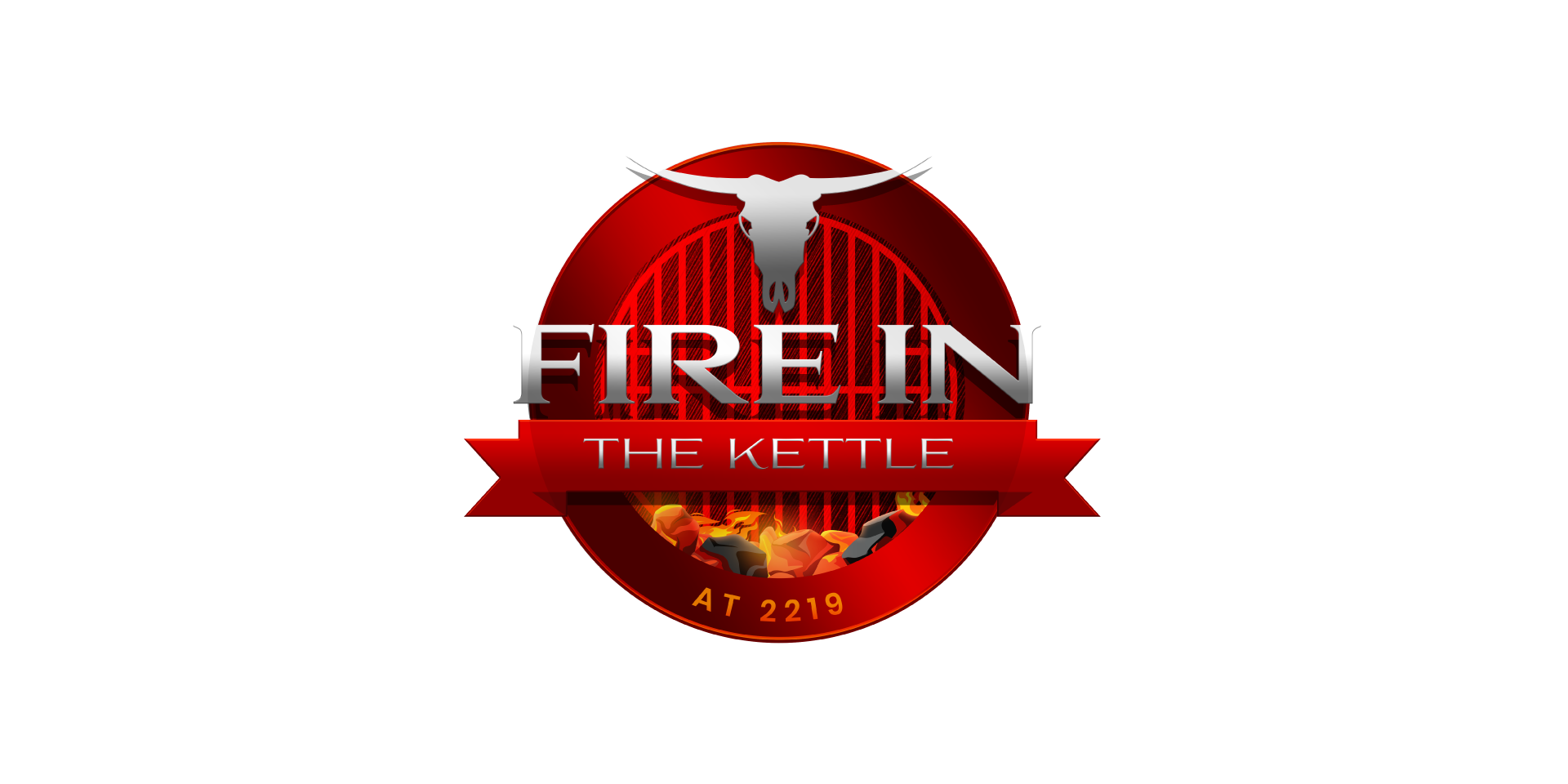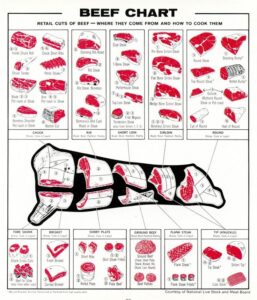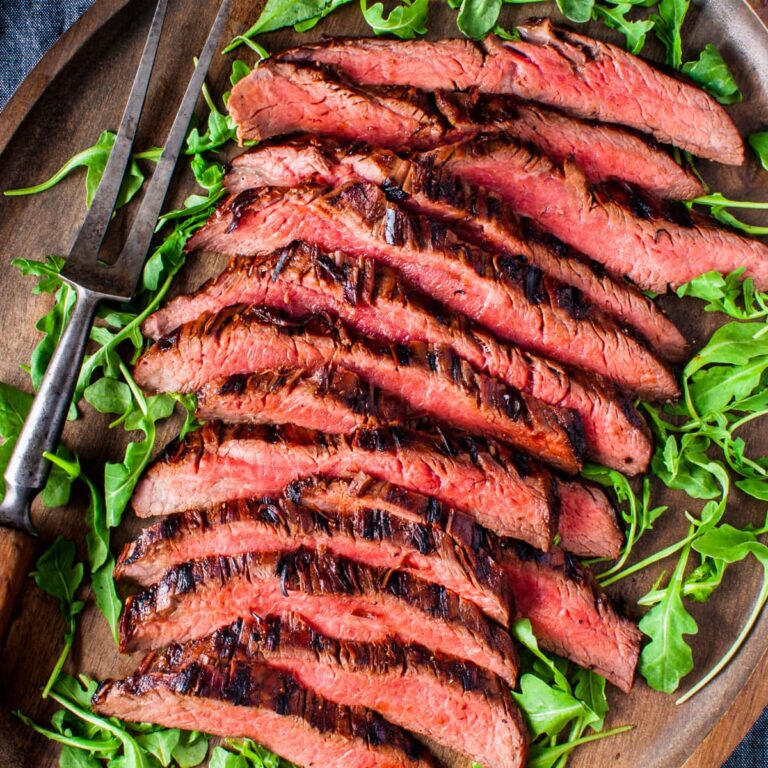
A Short Post Guide to the Cuts of Beef Part Two

- Richard Reynolds Jr.
A Recap:
In my previous blog post, titled ‘A Short Post Guide to the Cuts of Beef Part One,’ I delved into the importance of understanding the various cuts of beef derived from a cow (steer). I introduced the concept of the Eight Primal Cuts, which serve as the foundational categories for butchers and meat processors. If you haven’t had a chance to read that post yet, you can find it here. Additionally, I discussed the characteristics of sub-primal cuts, which are derived from these primal cuts. In this follow-up blog post, I aim to explore the practical applications of these sub-primal cuts, offering examples to illustrate their usage. If space allows, we’ll also begin a detailed examination of select sub-primal cuts to deepen our understanding.
the usage of sub-primal cuts:
Exploring the usage of sub-primal cuts illuminates their crucial role in the culinary realm. Chefs, butchers, and meat processors rely on these cuts to craft retail cuts for consumers and to prepare large portions for commercial kitchens. From succulent ribeye steaks to flavorful pot roasts, sub-primal cuts serve as the foundation for a vast array of dishes spanning various cuisines. These cuts offer flexibility in both preparation and presentation, as they can be further trimmed and portioned to meet specific preferences. For instance, the versatile flank steak can be thinly sliced for stir-fries or marinated and grilled whole for fajitas. Similarly, the brisket, prized for its rich flavor and tender texture, is often slow-cooked for barbecue, or braised for hearty stews. By understanding the usage of sub-primal cuts, home cooks can unlock a world of culinary possibilities, enhancing their cooking with a blend of flavor and creativity.




Examples of Sub-primal cuts:
Now that we’ve explored what a sub-primal cut is, along with its characteristics and usage, let’s delve into some specific examples. Common sub-primal cuts encompass a variety of flavorful options. The beef tenderloin, renowned for its exceptional tenderness, is often referred to as the “filet mignon” when portioned into steaks from the loin region. From the rib primal, we find the ribeye roast, distinguished by its rich marbling and intense flavor, making it a favorite for roasting or grilling. Moving to the chuck primal, we encounter the chuck roast, perfect for slow-cooking to tender perfection in stews or pot roasts. From the round primal, the top round emerges, lean and well-suited for roasting or thinly slicing for sandwiches. Finally, the skirt steak, originating from the flank, offers robust beefy flavor and is ideal for marinating and grilling in dishes like fajitas or carne asada. These examples provide just a glimpse of the diverse range of sub-primal cuts available, each offering its own unique characteristics and culinary potential. As you continue to explore the world of cooking, remember that understanding these cuts empowers you to elevate your culinary creations and discover new flavors and techniques.
a half side of beef explained:
It is crucial to understand that a half side of beef is subdivided into the front quarter and the hind quarter. Typically, the cutting process begins with the front quarter. A cow (steer) has thirteen ribs per side, totaling twenty-six ribs. The initial cut made by the butcher or meat processor separates the chuck from the rib and plate sections by slicing across the carcass between the 5th and 6th ribs. For the purpose of this discussion, let’s set aside the chuck and focus on the rib and plate section. The butcher or beef processor then proceeds to remove the skirt steak from this section, utilizing a very sharp knife. Following this, the butcher or meat processor employs a band saw to separate the Plate from the Rib, a step that will be further elaborated upon later in this blog post or in a future one, space permitting. The Rib Steaks are then separated from the Beef Ribs. The butcher or meat processor carefully trims the outer layer of fat attached to the Beef Ribs with a knife and cleans as much of the fat from the ribs as possible.
The Beef Rib:
I want to note that the Beef Rib can be referred to as a Rib Roast, Ribeye Steaks, or Rib Steaks. The difference between Rib Steaks and Ribeye Steaks is that Ribeye Steaks are boneless, whereas Rib Steaks are bone-in. To provide a clearer understanding of the Beef Rib, I will cover all three variations either in this blog post or in the next blog post to come.
The first step in preparing the Beef Rib is for the butcher or meat processor to remove the small bone running the length of the Beef Rib, which is referred to as the ‘backstrap’ or the ‘chine bone,’ typically using a band saw. Once the ‘backstrap’ or ‘chine bone’ is removed, the Rib Section is ready to be trimmed.
The initial trimming process involves removing the ‘feather bones’ or ‘featherbones.’ These thin and cartilaginous bones are typically trimmed away to enhance the presentation and eating experience of the final rib cuts, such as ribeye steaks or prime rib roasts.
Next, the butcher or meat processor will remove the fat cap from the beef rib, which is located on the outer surface of the rib roast or ribeye steak. This layer of fat adds flavor and moisture to the meat during cooking. While some chefs prefer to leave a thin layer of fat to enhance flavor and juiciness, others may trim it more closely for a leaner presentation. Due to space constraints, I will continue the discussion on the different parts of the beef rib in the next blog post, where I will delve deeper into the various cuts and their preparation methods.
Did you Know?
Did you know that within a half side of beef (steer), there are typically two skirt steaks? One is the outer skirt steak, which sits atop the plate and rib section, and the other is the inner skirt steak. While the outer skirt steak is often thinner, some chefs prefer its tenderness over the inner skirt steak. Both cuts are located on the underside of the rib section, between the ribs and the abdominal cavity. To retrieve the inner skirt steak, butchers or meat processors may need to trim away some excess fat and gristle, but it’s important to handle this step carefully to preserve the meat’s flavor and tenderness.
In Closing:
To wrap up this short blog post, we’ve taken a journey through the world of beef cuts, exploring the importance of understanding primal and sub-primal cuts, as well as their practical applications in culinary endeavors. From succulent ribeye steaks to flavorful pot roasts, each cut offers its own unique characteristics and culinary potential. We’ve only scratched the surface of the diverse range of sub-primal cuts available, leaving much more to explore in future discussions. Stay tuned for our next blog post, where we’ll continue our exploration of beef cuts, delving deeper into the intricate details of the beef rib and its various variations. In the meantime, continue to experiment in the kitchen, and remember that understanding these cuts empowers you to elevate your culinary creations and discover new flavors and techniques.
